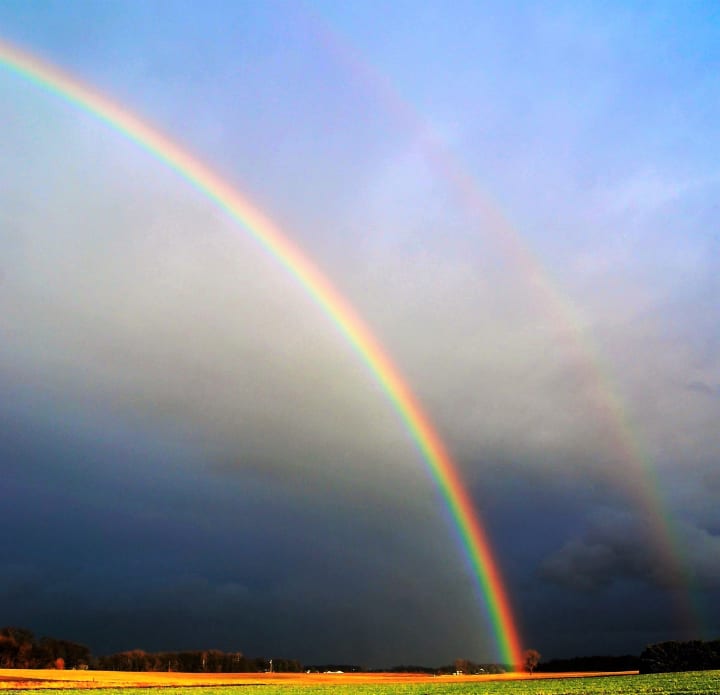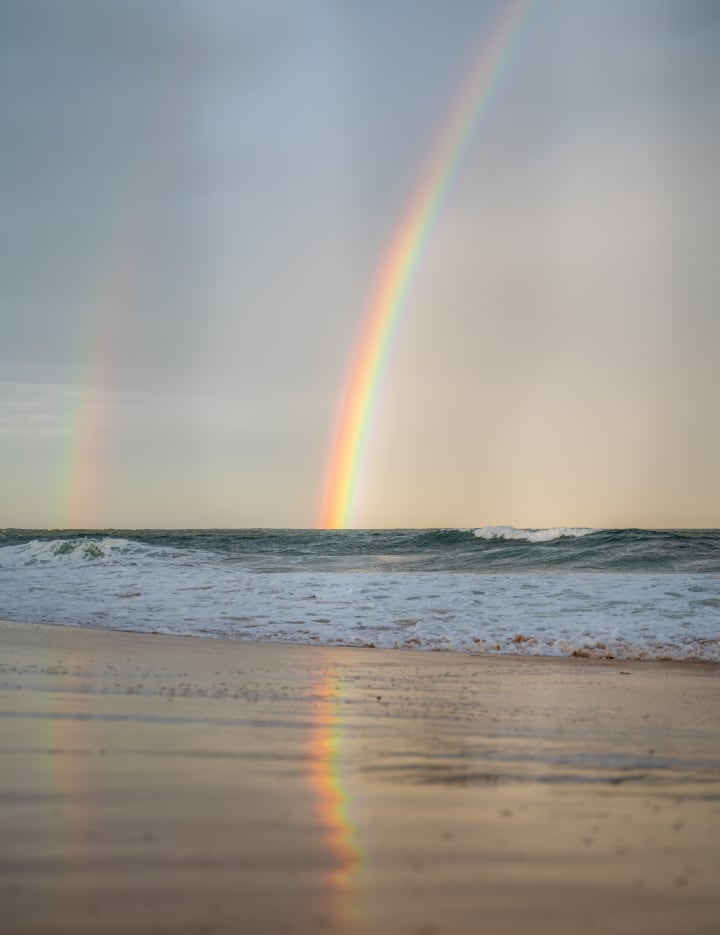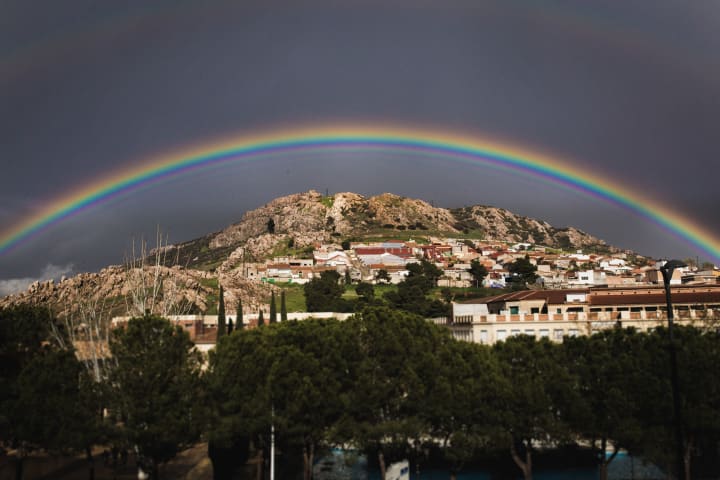
Rainbows are one of the most beautiful and natural phenomena that occur in our atmosphere. They are a result of the interaction between sunlight and water droplets in the air. Rainbows are often associated with positivity, hope, and beauty. In this blog, we will explore what makes rainbows so special and how they form.

Rainbows are created when sunlight is refracted, or bent, as it passes through water droplets in the air. The light is then reflected inside the droplet and refracted again as it exits. This causes the light to be split into its component colors, which we see as a rainbow. The colors of the rainbow are always in the same order: red, orange, yellow, green, blue, indigo, and violet. This sequence of colors is often remembered by the acronym ROYGBIV.
One interesting fact about rainbows is that they are actually full circles. However, we usually only see a portion of the circle because the ground or other objects block the bottom half of the circle. If you were in an airplane, for example, you might be able to see a full circle rainbow.

Rainbows are also one of the most common and well-known optical phenomena. They have been the subject of much fascination and folklore throughout history. In many cultures, rainbows are seen as symbols of good luck, hope, and positivity. In Norse mythology, a rainbow bridge called Bifröst connects the world of humans to the world of the gods. In Greek mythology, the rainbow was a pathway that the messenger goddess Iris used to travel between the earth and the heavens.
Rainbows have also been the subject of scientific inquiry for centuries. In the 17th century, Sir Isaac Newton famously used a prism to demonstrate that white light is actually made up of different colors. This discovery was a major breakthrough in the field of optics and led to a better understanding of how rainbows form.

In addition to their beauty and cultural significance, rainbows also have practical applications in science and technology. For example, they are used in spectroscopy, a technique that allows scientists to analyze the chemical composition of materials. By shining light through a sample and observing the resulting rainbow-like pattern, scientists can determine what elements are present in the material.
Rainbows are also used in the field of meteorology to help predict weather patterns. The presence of a rainbow can indicate the presence of rain and can also help meteorologists determine the size and shape of raindrops in the air.

Despite their beauty and practical applications, rainbows are not always easy to spot. They require specific conditions to form, including sunlight, water droplets, and a clear view of the sky. Rainbows are most commonly seen after a rain shower when the air is still moist and the sun is shining. They can also be seen near waterfalls or other sources of mist.
If you want to spot a rainbow, the best time to look is in the morning or early evening when the sun is lower in the sky. Look for a bright spot of sunlight on the ground, known as a "sun dog," and you might be able to spot a rainbow nearby. You can also create your own rainbow by using a prism or other transparent object to refract light.

In conclusion, rainbows are a beautiful and fascinating natural phenomenon that have captivated people for centuries. They are a product of the interaction between sunlight and water droplets in the air and are associated with positivity, hope, and beauty. Despite their widespread popularity, rainbows are not always easy to spot and require specific conditions to form. Nonetheless, their beauty and practical applications make them an important and beloved part of our natural world
About the Creator
Enjoyed the story? Support the Creator.
Subscribe for free to receive all their stories in your feed. You could also pledge your support or give them a one-off tip, letting them know you appreciate their work.





Comments
There are no comments for this story
Be the first to respond and start the conversation.